The United States is very slow and sluggish. But, yeah, the USA just simply cannot compete against China. As I have repeatedly stated, there are two issues involved…
- China: Everyone in the USA and the West, lives in an echo chamber. They have no idea what China is, what it can do, how powerful it is, how skilled it is, and what a full-on mobilization of China would do.
- USA: Everyone in the USA and the West lives in a echo chamber. They have no idea how little of American ability remains after the woke purges, societal changes, and the dearth of education.
In short, the American “leadership” and it’s people believe that China is far weaker than it actually is, and the USA is far stronger than it actually is.
Here’s two Mainstream media videos. Thankfully short. I can barely stand the USA media.
You can just read the titles. Watching them might cause you to vomit.
The U.S. Is Not Ready For Possible Escalation With China, Warns House Member
Duh!
Chip ban: A Chinese retaliation could be ‘disastrous’ for U.S. companies
Duh! You don’t say.
Does most of the world hate the USA?
Yes and It’s very simple.
The US wants to make sure the entire world to be submissive and subservient to them and logically no nations would ever want to be a slave to the US.
The US will take barbaric and despicable actions such as murder, carpet bombings, using biological and chemical weapons to do regime change and slaughter innocent men, women and children. Do you expect the world to accept the most violent and criminal nation to continue this shit?
After doing shit like doing regime change at the cost of thousands of deaths by the CIA operatives Victoria Nuland and replacing the Ukrainian leader with a US lackey, and push the world into turmoil blames Russia entirely for the war! Unbelievably hypocritical and pathetic. At least own your shit for god sake and be proud of your shit. The world took notice.
Master Monster Resource
So please check out this monster master resource of all the articles and thoughts banned from China. It will blow you away. I’ll tell you what!
Go HERE for this…
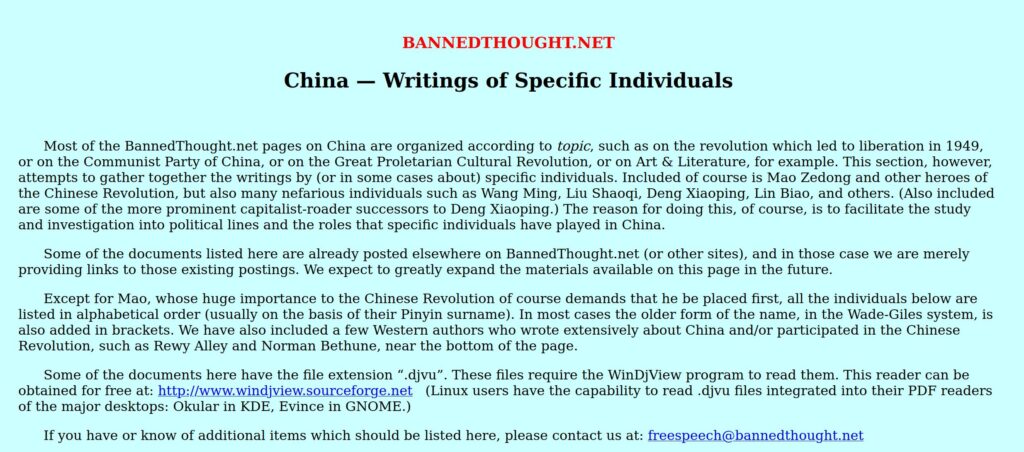
Peach Pie
A homemade Peach Pie is one of the summer’s sweetest traditions. When peaches are in season, you likely have a whole bushel ready to be sliced for a juicy snack, added to yogurts and parfaits or included in a bowl of other fresh fruit. There are so many wonderful ways to enjoy peaches, but we think this easy Peach Pie recipe is one of the best. You need just 6 ingredients, 25 minutes of prep time and frozen Pillsbury™ Deep Dish Pie Crusts to make this recipe for Peach Pie. Soon you’ll be serving up golden slices of Peach Pie with a scoop of ice cream on top.

Ingredients
- 2/3 cup sugar
- 1/3 cup Gold Medal™ All-Purpose Flour
- 1/4 teaspoon ground cinnamon
- 5 to 5 1/2 cups sliced peeled fresh peaches (5 to 6 medium)
- 1 teaspoon lemon juice
- 1 package (12 oz) frozen Pillsbury™ Deep Dish Pie Crusts (2 Count)


What has President Xi Jinping done that has made him so liked and respected in China?
Let’s take a look at the changes that have taken place in China since Xi Jinping took office.
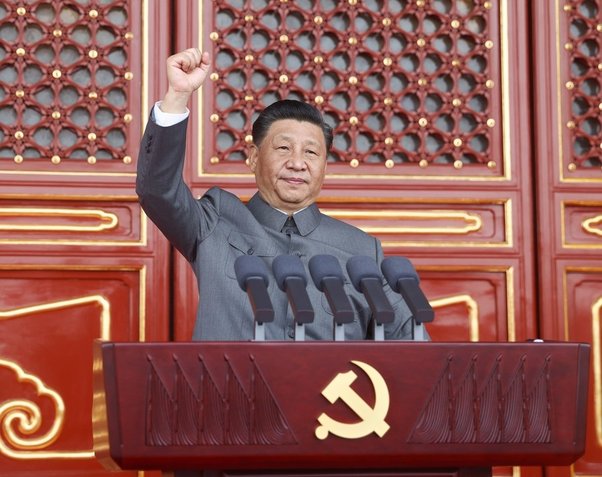
1. Great economic strength. China’s average annual GDP growth of 6.6% from 2013-2021, higher than the world average of 2.6% and the developing economies’ average growth of 3.7% over the same period; GDP reaches 114.4 trillion yuan in 2021, 1.8 times more than in 2012. GDP per capita has even achieved a new breakthrough. In 2021, China’s GDP per capita reaches 80,976 yuan, an increase of 69.7% over 2012 and an average annual growth rate of 6.1%. 2021, the national general public budget revenue reaches 20.3 trillion yuan, an average annual growth rate of 5.8% from 2013 to 2021.
2. Growing scale of infrastructure. From 2012-2021, China’s railroad mileage increased from 98,000 km to 151,000 km. By the end of 2021, a total of 1.425 million 5G base stations will have been built and opened, the world’s largest 5G network will have been built, and the total number of 5G base stations will account for more than 60% of the global share, ranking first in the world. In terms of energy, in 2021, China’s total primary energy production will be 4.33 billion tons of standard coal, an increase of 23.2% over 2012, with an average annual growth rate of 2.3%. at the end of 2021, the country’s installed power generation capacity will be 237,692,000 kilowatts, an increase of 1.1 times over the end of 2012; the scale of hydropower, wind power and solar power generators under construction will be stable and rank first in the world.
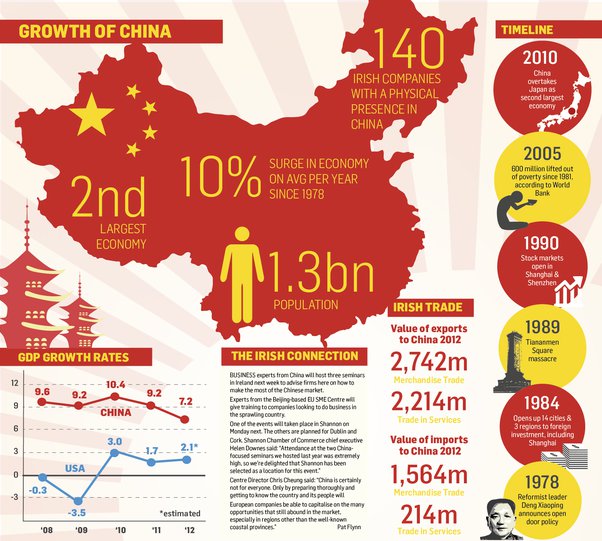
3. Corruption is curbed. Xi Jinping personally guided and deployed the anti-corruption work in the new era. In the five years between the 18th and 19th Communist Party Congresses, a total of 440 party cadres and other cadres above the provincial and military level were investigated and punished. From the end of the 19th CPC National Congress to the end of 2018, more than 70 cadres were opened for review and investigation by the State Supervision Commission of the Central Commission for Discipline Inspection.
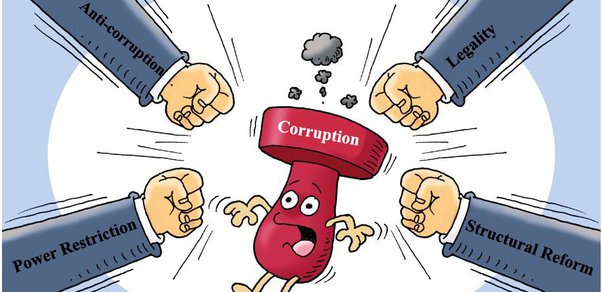
In the first half of 2022 alone, the national discipline inspection and supervision organs disposed of 739,000 problem clues, opened 322,000 cases and disciplined 273,000 people. Among them, 21 cadres at the provincial ministerial level were punished, 1,237 cadres at the departmental level and 10,000 cadres at the county level. Under the high pressure deterrence and policy inspiration, the number of active surrender has increased significantly. Since the 19th Party Congress, a total of 74,000 people have voluntarily surrendered to the discipline inspection and supervision organs nationwide.
4. Eliminate absolute poverty. By February 2021, China had achieved a comprehensive victory in the battle against poverty, with 98.99 million rural poor people having been lifted out of poverty under the current standards, 832 poor counties having been removed from the list, 128,000 poor villages having been listed, and overall regional poverty having been resolved, completing the arduous task of eliminating absolute poverty.
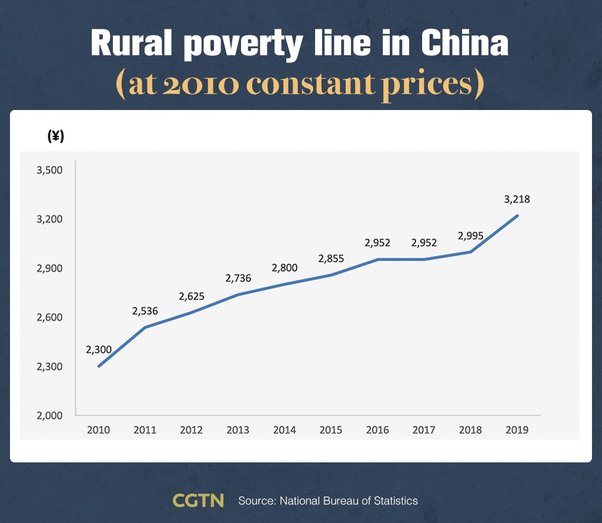
5. Respond effectively to the COVID-19 pandemic. Since the beginning of the New Year of 2020, Xi Jinping has presided over 14 meetings of the Standing Committee of the Political Bureau of the Central Committee, 4 meetings of the Political Bureau of the Central Committee and many important meetings of the Party, and carefully deployed the epidemic prevention and control campaign. 540,000 medical personnel in Hubei Province and Wuhan City, 46 national medical teams, and more than 40,000 medical personnel resolutely rushed to the front line to fight the virus. In just a few tens of days, Vulcan Mountain Hospital and Leishen Mountain Hospital have risen from the ground. China developed nucleic acid detection kits for the first time, and vaccine research and development was generally in the leading position in the world, and free vaccination for the whole people in batches…
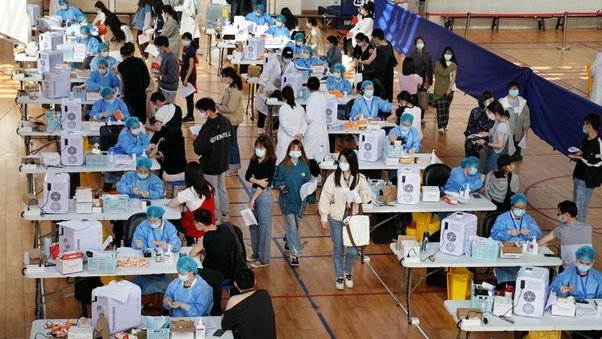
Diplomacy, culture, the military, and so on are endless. These not only reflect the unity spirit of the Chinese people, but also demonstrate the people-centered thinking of the Party Central Committee with Xi Jinping as the core.
Over the years, Xi Jinping has insisted on in-depth investigation and investigation at the grass-roots level, observing the people’s feelings and guiding economic and social development. Factories, villages, communities, ports, schools, armies, he is everywhere.
Since becoming general secretary, Xi Jinping has been with the people every year on the occasion of the Spring Festival. Braving the bitter cold of minus 30 degrees Celsius to visit workers in difficulty in border towns, he also sent the masses the New Year goods he had purchased at his own expense, worked with the masses to play sticks, pasted the word “Fu” on the doors of the masses, and cared about whether the poor peasants could eat enough grain, whether there was a guarantee for seeing a doctor, and whether their children could go to school.
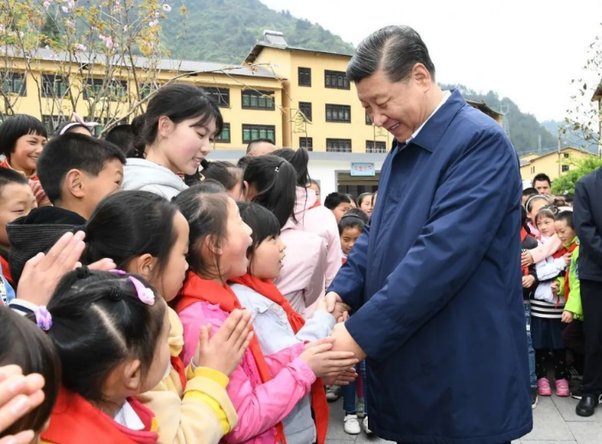
And the leaders of some Western countries such as the United States continue to slander and attack China, so why not look at what they have brought to the people? U.S. immigration policy, minorities, political deception, COVID-19 response… Society is devastated, how can we point fingers at others?Everything he does deserves the respect and love of all Chinese.
El Mejor Jamon del Pais Peruano (Peruvian Country Ham)
“This is my own recipe for jamón del país (Peruvian-style country ham). Most restaurants in the US make a version that is too dry because they don’t take into consideration that pork is leaner in the US than it is in Peru. This recipe remedies that, so it makes the moistest jamón del país you’ll have outside of Peru. Keep in mind that it will be 3 days before the jamón is ready to slice. I cook it sous vide because that is the best way to cook lean pork and ensure that it is tender and juicy. If you do not have an immersion circulator, you can poach the pork in a flavorful stock (which is traditional but more difficult) until it reaches an internal temperature of 160 Degrees.”

Ingredients
- 3 lbs pork loin
- 2 liters water
- 1⁄2 cup salt
- 2 tablespoons sugar
- 1 teaspoon msg
- 1 teaspoon black pepper
- 1⁄2 teaspoon ground oregano
- 1 teaspoon turmeric
- 1 teaspoon cumin
- 1 tablespoon lard
- 1 tablespoon garlic paste
- 3 ounces ground aji panca chiles without seeds
- 1 cup achiote oil
Directions
- Butterfly your pork loin lengthwise in a tri fold. In a large bowl or other container, mix together 2 liters water, 1/2 cup salt, 2 T sugar, and 1 t MSG. Add pork loin. Cover and let brine overnight in the refrigerator.
- The next day, remove the pork loin from the brine. Pat it dry and set aside. In a bowl, combine the black pepper, oregano, turmeric, cumin, lard, garlic paste, and the ground aji panca to form a paste. Rub the paste evenly all over the butterflied pork loin.
- Now roll the pork loin up like a jelly roll, making sure it is tight. Tie it tightly together using kitchen string. Alternatively, you can also use butcher’s netting, which is preferable and will make a tighter, more attractive ham.
- Place the Pork roll in a vacuum seal bag. Use a vacuum sealer to remove all the air and seal tight. Refrigerate overnight or up to 48 hours.
- The next day, set an immersion circulator in a large container of water and set the temperature to 160 Degrees F. Meanwhile, let the pork loin warm up just a bit on the counter. When the immersion circulator comes to temperature, drop in your vacuum sealed pork loin and cook for 2 hours.
- Once 2 hours have passed, remove the bag from the container of water. Let it rest for a few minutes until it is cool enough to handle. Open the bag and remove the pork. Reserve any juices if you want. Pat dry and wipe off any scum or blood. Set aside.
- Meanwhile heat up the achiote oil (1 cup of vegetable oil heated up with 1 T achiote seeds over medium heat until oil is deep red; strain and reserve) until just too hot to touch. Sear your pork loin on all sides so that it gets a nice golden orange color on it. Immediately remove the pork roll, wrap in plastic wrap tightly and then another layer of foil. Cool to room temperature and then place in the refrigerator to cool overnight. The next day it is ready to slice and eat.
American Today – Idiocracy Prison Escape
This video, on the other hand, is a must watch.
If Russia nukes Ukraine or China invades Taiwan at that point should the us military intervene and ensure both of those countries defeats?
It sets a standard for other countries that it’s okay if the USA does nothing while these atrocities happen?
Both cases are absolutely none of USA’s fucking business. Ukraine is not part of NATO. Taiwan is part of China and thus China’s domestic matter.
Who made USA the arbiter of international affairs?
Besides, USA cannot ensure their defeat. Both Russia and China are major nuclear powers. Waging war with either of them risks global destruction.
How did Xi Jinping win his election over his rivals?
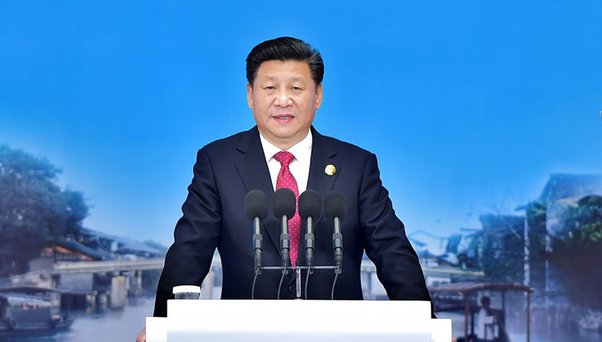
In China, if you want to be a leader, you have to start from the grassroots level to accumulate rich government work experiences after ascending nine levels of posts: section chief, deputy division chief, division chief, deputy director of general office, director of general office, vice-minister, minister, deputy-state leader, state leader. With such experiences, you may have the opportunity to become one of the candidates for leadership.
As of June 30, 2018, there are 89.56 million Communist Party of China (CPC) members in China. If you want to run for election of the leadership, first of all, you must become a CPC member. In China, the majority of new Party members are fostered in universities. And the minimum standards of becoming a Party member are: excellent academic scores, outstanding daily performance, and certain class management experience are preferred. Of course, if you are in other occupations, as long as your performance is excellent, and you are dedicated, there are opportunities to become a Party member.
After becoming a Party member, you need to become China’s public officials, that is, civil servants. Nearly two million applicants participate in the annual civil servant’s exam to compete for around 10,000 positions. Congratulations, you are now a civil servant if you stand out in fierce competition of one out of 200. But, don’t get too optimistic. You are just at the starting line, since there are over 7 million civil servants nationwide.
When in the civil service, you start from the grassroots level, equivalent to community work in Europe and United States, then you climb the ladder of nine levels from county to city, then to provincial level, and then head for the central level. When you finally make your way into the Standing Committee of the Political Bureau of the CPC Central Committee, congratulations again! You now have a chance to be the next state leader of China.
In the case of Chinese leader Xi Jinping, he completed nine levels after assuming 16 major positions with government work experiences in two provinces and one municipality,Fujian, Zhejiang and Shanghai with a total population amounted to 150 million. It was a 40 + years’ journey from a Party Secretary of a production brigade, to No. 1 leader of Fujian and Zhejiang provinces and Shanghai, and then to Vice-president of China, to CPC General Secretary, President of China, and finally top leader of China.
To evaluate the candidate for a higher level, a combination of methods including ‘polls and votes’ and ‘recommendations and inspections by organization’ are used. Morality stands of fundamental importance, so the key point here is to appraise one’s ethical character and work competence.
The economic growth rate is not the only benchmark to evaluate competence, the improvement of livelihoods, income index of residents, spirit of pragmatic work are all taken into consideration. Officials who crave lucrative positions or solicit votes will be removed from the list of potential candidates for promotion.
Let’s again take the example of Xi. While working in Ningde, Fujian as local Party secretary, his footprints covered nine counties. After getting transferred to Zhejiang, he spent about 50 percent of his work time to research local people’s living conditions. He usually got up at six to seven in the morning and worked late until midnight. He traveled around 90 cities and towns of the province in less than two years. While in Shanghai, he also toured all 19 districts and counties.
His fast pace and vigorous efforts were rewarded with fruitful achievements. Taking Ningde as an example, during his term of one and a half years, the rate of poverty alleviation had reached a record high – 96%. While he was in Zhejiang, the GDP (gross domestic product) of the province witnessed a drastic increase from 767 billion yuan in 2002 to one trillion and 863.84 billion yuan in 2007.
Facts have proven China’s rapid development in the past five years under Xi’s leadership — 66 million Chinese escaped from poverty; contributing more than 30% to world economic growth, which ranks No. 1 worldwide — can be attributed to his solid government work experience at various levels.
In China, only through tests and practices at various levels can one become a state leader of the nation with a population of almost 1.4 billion.
When shall Chinese realize the detriments of dictatorship affecting Chinese since ancient times?
Mao is the one founded PRC from RoC hand, and started being authoritarian and Xi is more than that? We need world to help us for democracy.
Complete and total bullshit. No part of your question makes any fucking sense.
For over 3,500 years, the Chinese people chose dynastic rule.
When the Chinese tried Western-style democracy in 1912, it was a massive clusterfuck.
After the civil war in 1949, the Chinese chose communist rule.
This has always been the choice of the Chinese people. They have not asked for help from the West.
In fact, the Chinese are totally satisfied with their political system. According to the Edelman Trust Barometer
, China’s government has the highest trust level in the world at 91%:
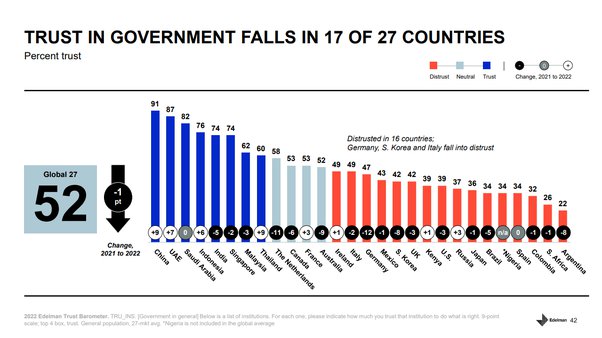
According to a 2020 Ash Center study
from Harvard Kennedy School, the satisfaction level of the Chinese people for their government is at a whopping 95.5% !!!
Moreover, the Chinese regard their country as the most democratic in the world! This according to Latana’s Democracy Perception Index.
China is democratic, much more so than Western democracy. Why would the Chinese want to adopt your piece o’ shit of a political system?
State of the Union (2006) Terry Crews
Reminds me of Trump.
Will China most likely retake Taiwan sooner than 2027 now that the Chinese government made amendments into their constitution which opposes Taiwanese separatism and independence?
Very likely! The Beijing-Taiwan Expressway needs to be open to traffic by 2035, and the Taiwan section will be completed at least a few years earlier!
As for what approach the Chinese Communist Party will take, it’s anyone’s guess!
A peaceful way? The way of force? The way of forcing peace by force? No one can guess except a few people in the CPC Central Politburo!

But, the next few years are really a good “window of opportunity”. For reasons that are well known, the United States now looks aggressive, but is actually weak inside!
After all, Before 2018, no one could have imagined that the riots in Hong Kong would have subsided so quickly, and that the PLA did not send 1 soldier; Before 2019, no one could have imagined that the world would look like this today!
— Not only is the United States now purchasing iodine tablets, but many European countries, such as Finland, are also beginning to purchase them and recommend that families stock up. Poland has even started distributing iodine tablets. Iodine tablets are used to protect against nuclear radiation!

Why are the Saudis now taking Putin’s side over the West’s side?
They aren’t!!!
They are simply doing what’s best for them for the first time in 70 years.
Here you have a bunch of idiots telling them that they will decide what price and how much oil should Saudi produce?
And at the same time take idiotic actions that cause imports to be far more expensive and the USD to be more expensive and yet force them to do trades in USD????
How long would anyone stand for it?
Saudis can sell oil at $110 but they are forced to keep production higher to keep the price at $85
Meanwhile Imports costing $ 50 , now costs $ 75 due to the War in Ukraine and shortages
Thus Saudi makes $ 10 when it could be making $ 35 in the worst case scenario
Saudi pays 87.8% transactions in USD and yet has barely 5.4% of itsTrade with US
Saudi pays 0.54% transactions in Yuan despite doing 27.7% of it’s Trade with China
Thats stupid right?
So MBS decided to do what’s good for Saudi Arabia for a change
Deal in Yuan more, Sell Oil as a Capitalist, same Capitalism with which the West sells Saudi it’s weapons,

And the Minute anyone questions the West and it’s logical fallacies or does what’s best for their countries or has a bit of dignity and self respect for their people
They are Putin Spies
Like Poor Tulsi Gabbard or MBS
Dr. Lexus (2006) Justin Long
https://youtu.be/BdPmNM0IF7Y?list=TLPQMjgxMDIwMjJbcp3U_NAUTg
Since the portion sizes of meals are so small in Asian countries, do they eat more often?
I’m Asian but was born in the US. My wife and I recently visited the Philipines (wife is half Irish half Filipino). I remember going out for lunch with a group of people and they all ordered a burger… just a burger. No fries, no extra nuggets, no nothing. And no, no one ate again until dinner. Just a burger and a drink, and the burgers looked like this.

I was like “WTF is this? A kid’s meal?” Where’s the rest of my food?

Now that! That is a man’s meal!
But then it suddenly occured to me..

Where are all the obese people?! Why is everyone normal sized?
And suddenly I realized…

Asian portions aren’t “small”. Asian portions are “normal”.
The Big Tech Companies Are Telling Us Exactly Where The Economy Is Headed In 2023
If you didn’t like economic conditions in 2022, then you are definitely not going to be pleased by what is coming in 2023. This year we have had to deal with rampant inflation, very sluggish economic activity and the beginning of a horrifying housing crash, and that hasn’t been fun. But it appears that next year will be even worse. Most of the big tech companies have been reporting dismal numbers for the third quarter, and that is a very bad sign. Even when just about everyone else was scuffling along, we could always count on the big tech companies to produce booming numbers. But now that has changed in a major way, and their stock prices are being absolutely hammered as a result.
Just look at what is happening to Facebook. Overall revenue actually declined during the third quarter, and the other numbers that they just released deeply alarmed investors on Wall Street…
While revenue fell 4% in the third quarter, Meta’s costs and expenses rose 19% year over year to $22.1 billion. Operating income declined 46% from the previous year to $5.66 billion. Meta’s operating margin, or the profits left after accounting for costs to run the business, sank to 20% from 36% a year earlier. Overall net income was down 52% to $4.4 billion in the third quarter.
This wasn’t supposed to happen.
Perhaps Facebook should not have spent the past several years alienating a very large portion of their user base.
In the aftermath of the announcement of the third quarter numbers, the stock price fell like a rock…
Facebook parent company Meta’s stock plummeted on Thursday, following its announcement of a dismal third quarter. At market close on Thursday, shares in the tech company had fallen nearly 25%, selling for under $98 apiece, a level not seen since 2016.
Things got so bad that Jim Cramer felt forced to apologize to his viewers for recommending the stock back in June…
In June, Cramer encouraged viewers to buy Meta stock. However, during Thursday’s Squawk on the Street, Cramer broke down. “I made a mistake here. I was wrong. I trusted this management team. That was ill-advised. The hubris here is extraordinary and I apologize,” he said. Whenever I go on Facebook these days, which isn’t very often, it just feels so dead.
And very few people even want to try the new “metaverse” that the company has been pushing.
The future of the company does not look bright, and one prominent investor is actually recommending that 20 percent of all employees should be immediately laid off…
An investor of Facebook-parent Meta Platforms urged CEO Mark Zuckerberg to cut 20 percent of the company’s workforce to reduce its loses ahead of the company’s bitterly disappointing third-quarter earnings report. Shareholder Altimeter Capital Management said in an open letter to Zuckerberg that it was concerned about Meta’s controversial pivot to virtual reality, which is bleeding money.
If they had made much better decisions, things could have turned out very differently for the company.
But now Facebook is in a serious state of decline, and Mark Zuckerberg’s fortune is disappearing at a rate that is absolutely stunning…
Mark Zuckerberg’s fortune plunged by $11 billion after his Meta Platforms Inc. reported a second-straight quarter of disappointing earnings, bringing his total wealth loss to more than $100 billion in just 13 months. Zuckerberg, 38, now has a net worth of $38.1 billion, according to the Bloomberg Billionaires Index, a stunning fall from a peak of $142 billion in September 2021. While many of the world’s richest people have seen their fortunes tumble this year, Meta’s chief executive officer has seen the single-biggest hit among those on the wealth list.
Meanwhile, Amazon has just released numbers for the third quarter that were also quite depressing…
Amazon on Thursday posted weaker-than-expected earnings and revenue for the third quarter and gave a disappointing fourth-quarter sales forecast. The stock plummeted as much as 16% in extended trading, which would mark its biggest decline since 2006 should the drop hold up on Friday.
Of course Amazon is in much better shape than Facebook is.
Revenue is still growing, it is just not growing as fast as Wall Street expected.
Several other big tech companies have also reported disappointing numbers for the third quarter. For example, Google did much more poorly than expected thanks to a decline in revenue at YouTube…
Ad revenue has been a particular point of contention for companies like Google-parent Alphabet, which saw revenue for its video streaming platform YouTube fall for the first time since it began reporting the value in 2020, according to The WSJ. Overall, Alphabet saw a 26.5% annual decline in net income to $13.9 billion in the third quarter, despite consistent revenue growth in its cloud-computing division, which saw an annual gain of 37.6% to $6.9 billion.
All of the big tech stocks have been falling for quite some time now, and at this point the six biggest have collectively lost a whopping 2.5 trillion dollars in market value…
This year, Meta, Netflix, Amazon, Microsoft, Alphabet and Apple have lost $2.5 trillion in market value combined, Reuters reported Wednesday.
The tech giants were on the cutting edge of the stock market boom on the way up, and now they are on the bleeding edge of the crash on the way down.
But of course the housing industry is in far worse shape than the tech industry is at this point.
This week, mortgage rates jumped above 7 percent for the first time in 20 years…
Mortgage rates rose again this week, topping 7% for the first time since 2002. The 30-year fixed-rate mortgage averaged 7.08% in the week ending October 27, up from 6.94% the week before, according to Freddie Mac. A year ago, the 30-year fixed rate stood at 3.14%. The last time the average rate surpassed 7% was in April 2002.
Higher mortgage rates are driving countless prospective buyers out of the market, and this is going to drive down home prices dramatically.
In fact, one economist is now projecting that they could fall by as much as 20 percent next year…
Home prices are already falling at the fastest rate in decades as mortgage rates march higher, and could tumble another 20% next year, according to a noted Wall Street economist. Ian Shepherdson, the chief economist at Pantheon Macroeconomics, said in an analyst note published last week that there is “no floor in sight” for declining home sales with mortgage rates approaching 7% for the first time since 2001. He anticipates that home prices will plunge by 15% to 20% next year.
Let us hope that doesn’t actually happen, because that would be disastrous.
And we are already seeing homebuilders get absolutely monkey-hammered…
Housing construction and renovation plummeted 26.4%, the sixth straight quarterly drop. Fed rate hikes have driven up mortgage rates, pummeling home sales and building.
The months ahead do not look very promising at all.
But none of this should surprise any of us.
Our leaders have been making very bad decisions for a long time, and now we all get to suffer the consequences.
Full Release Costco Visit Scene
How will China adapt to the new US chip sanctions, which now deprive China of all advanced chips Huawei-style?
China’s indigenous chipmaking is still far from adequate.
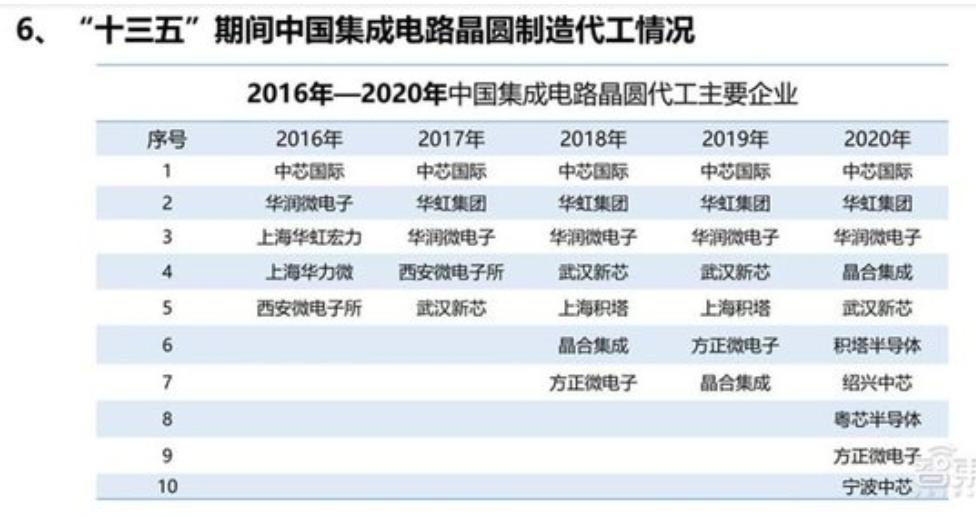
China’s annual imports of chips accounted for 80% of global chip imports.
China is the world’s most important customer.
The United States semiconductor exports accounted for 50% of the world’s market share.
The semiconductor industries are supposed to treat their world class customer very well to make the most out of the situation for mutually beneficial and win-win, but the United States is unhappily determined to suppress China.
That has also brought a lot of chain effects.
Although domestic-funded manufacturing enterprises are also growing, the growth rate is far lower than that of foreign-funded enterprises in China.
China’s first photonic chip production line to be ready in 2023: media report Chip Photo:VCG China's first production line for "multi-material and cross-size" photonic chips, or integrated optical circuits, will be completed in Beijing in 2023, a development that's expected to fill a gap in the nation's top-level manufacturing, the Beijing Daily reported on Tuesday. Compared with electronic chips, photonic chips offer higher speeds and lower power consumption. The calculation speed and transmission rate are 1,000 times those of electronic chips, according to the newspaper. If all goes as planned with the facility, it will show that the preliminary experimental research and development process is in place, with production technology that leads the world, analysts said. According to the Beijing Daily, the production line will be built by Sintone, a Beijing-based high-tech enterprise. The facility can meet market demand in multiple fields including communications, data centers, medical testing and other sectors, said the report, citing Sui Jun, the president of Sintone. The domestic use of photonic chips has extended into scenarios in industry, consumer electronics, vehicles, defense and other fields, according to a report by Minsheng Securities in September. The new facility will fill the gap in the field of photonic chip foundries in China and accelerate the process of domestic photonic chip replacement, Sui said. Photonic chips will be the next major direction of chip development due to their stability and low power consumption, Xiang Ligang, an independent technology analyst, told the Global Times on Tuesday. Such chips aren't yet being produced on a large scale anywhere in the world, so the new facility will show that China is leading in this technology in the world, said Xiang. China has become the world's largest optical communication market, and the size of the domestic photonic chip market has expanded remarkably. From 2015 to 2021, the domestic photonic chip market expanded from $800 million to $2.08 billion, with an average annual compound growth rate of more than 15 percent, according to Insight and Info. Sui said that making photonic chips is not as demanding as electronic chips in terms of structural requirements, as photonic chips don't require extremely high-end lithography machines such as extreme ultraviolet lithography, and can be produced using raw materials and types of equipment that are already mature in China. Xiang stressed that it will take time and industrial verification from the beginning of construction to mass production after the facility is completed. Sui said that the current development of the sector in China is more advanced in terms of applications and design but relatively weak in such basic aspects as equipment and manufacturing. The company will use its scientific achievements to provide practical and reliable support for core sectors such as quantum computing.
Photonic chips will be the next major direction of chip development due to their stability and low power consumption.
With the increase of US sanctions, the high-tech enterprises in China have realized that they can no longer be treated like a second-class enterprise, and “de-USA” in the hearts of domestic industrial enterprises has gradually become a consensus.
The domestic manufacturers have tried to use domestic chips.
That also makes the orders of domestic chip manufacturers soar.
With the continuously increasing new orders coming into the domestic manufacturers, the semiconductor chip industry seems to have grown with no direct foreign competition, and many chip manufacturers have chosen to stop accepting orders because of the huge number of order backlogs.
As the main consumer market for chips in the world, China has ushered in an excellent turning point in independent research and development.
The development degree of the semiconductor industries is one of the core indicators to measure the level of scientific and technological development of a country and is highly valued by most countries and used as a key industry to encourage development.
In fact, throughout the entire semiconductor industry, the proportion of cutting-edge processes is very small, especially in China, less than 5%. More than 90% or more is produced with the 28nm and above mature processes.
The lithography machine developed by Shanghai Microelectronics has the same accuracy as ASML’s DUV lithography machine. As long as the technology is mature, China can also directly cross from 28-nanometer chips to 7-nanometer chip production technology in one fell swoop.
China established a photoresist adhesive production base in 2019. After two years of arduous research and development process, domestic photoresist adhesive finally ushered in the dawn. The photoresist independent research and development success also let China get rid of the dependence dilemma on the foreign raw materials.
At present, the semiconductor industry is only in the continuous improvement of technology, there is no major change, so the key is for the Chinese to see themselves and show strong resilience, as long as they adhere to independent research and development, adhere to technological breakthroughs, the United States sanctions will not be terrible, and the impact is not that large.
From a regional perspective, the focus of China’s integrated circuit industry is in the Yangtze River Delta, Beijing-Tianjin-Hebei, and Bohai Rim regions, while in the Pearl River Delta region, the manufacturing industry has just started, accounting for only 2.8%.
In the future, on the one hand, the development of the manufacturing industry in the Greater Bay Area has a long way to go.
On the other hand, there is ample room for development in the Greater Bay Area of China.
The number of domestic foundry companies has increased from 5 to 10, but the growth in the field of integrated circuit foundry is only 5.57%, less than 6%. The domestic manufacturing growth rate is 23%.
This shows that with the increase of IDM enterprises, the structure of the integrated circuit manufacturing industry of China will undergo a relatively large change.
From the perspective of the industrial chain thanks to the support of major national special projects, the manufacturing technology continues to advance according to the node, and domestic manufacturers have made some progress and breakthroughs in mainstream technology and characteristic technology. The focus of the semiconductor industry is now the supply chain, equipment materials and components.
After more than ten years, the R&D layout of local integrated circuit equipment categories has been completed. Many of the missing items the Chinese see now are actually subdivided product varieties.
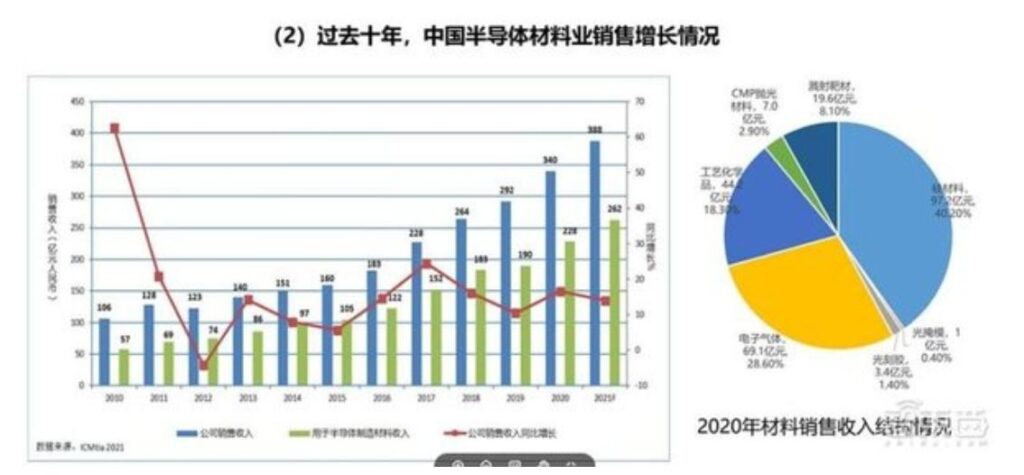
The annualized growth rate of integrated circuit equipment has reached 38.77% before 2020, a year-on-year increase of 48.6% in 2020 and is expected to reach 52% in 2021.
The situation of domestic integrated circuit materials is similar to that of equipment, and there are also major categories of layout, and the subdivision varieties are improving.
From the perspective of the proportion of various categories, China’s silicon wafers, electronic gases, and industrial chemicals are doing relatively well, but the proportion of photoresist and CMP polishing materials does not match the proportion of the global material revenue structure.
Today, when the technical bottleneck is prominent, FDSOI technology has shown its own advantages, which may bring new development space for the global integrated circuit industry, and it is worthy of the industry’s efforts to open up a new track.
Due to the development of atomic and molecular disciplines, the physical meaning behind Moore’s Law no longer exists. Various new applications and technological developments have brought the semiconductor industry into a new spring.
With the evolution of the process, 3D heterogeneous integration is becoming the new decisive track. Among them, the heterogeneous 3D integration of wafer and wafer bonding, and the homogeneous 3D integration in which the lithography process does not increase linearly with the number of layers will have bright development prospects. At the same time, in terms of heterogeneous integration with the highest density, China’s industry is ahead of the pack, which is also an opportunity for development.
According to Mr. Li Hong, CEO of China Resources Microelectronics, the semiconductor industries of China can make breakthrough advantages in several aspects such as characteristic technology, advanced packaging and industrial chain innovation synergy, and have the possibility to catch up with the world’s advanced.
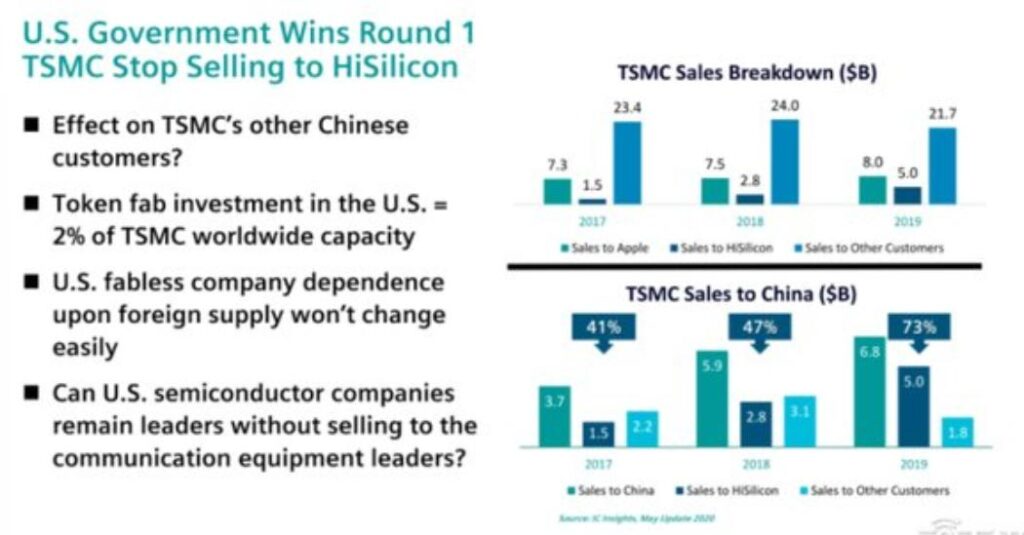
At present, Chinese investment has shifted from chip design to equipment and manufacturing, but this has not weakened the strength of chip design companies.
On the contrary, it has promoted the development of chip design companies.
In terms of process technology evolution, yield improvement is a very important area, and it is also an aspect that EDA tools can help wafer manufacturers improve.
The development of AI technology can also improve the efficiency of chip design. On the design side, EDA tools are scaling up designs.
The blockade of the United States has accelerated the road of China’s chip autonomy.
After China successfully creates a chip autonomy industry chain, it is really difficult to say who will dominate the international chip market in the future, and the blockade of the United States will also become a joke!
The layout and framework of China’s integrated circuit industry are the most complete.
In the field of integrated circuit manufacturing, the manufacturing industry maintained a growth rate of 23%, with sales reaching 256 billion yuan in 2020.
China just started building and developing its industries recently some ten years ago.
It may definitely be necessary for China to go through ten more years of continuous accumulation to supplement the short board, especially industrial talents.
If China can manage to train 500,000 experienced semiconductor integrated circuit industrial talents, they will have the ability to independently develop itself.
Continuously buying the foreign made equipment with no talent cannot make up for the shortcomings of research and development.
U.S. sanctions have indeed restricted Chinese chip companies’ access to advanced chip manufacturing processes, but this has not affected China’s share of the mid-to-low-end chip market.
According to data, China’s cumulative chip imports in the first four months of 2022 decreased by 24 billion chips compared with the same period in 2021, and the number has dropped significantly.
On the one hand, this is because the “global shortage of chips” has affected the supply chain of overseas chips, and on the other hand, the rapid development of state-owned chip manufacturers has increased the self-sufficiency rate.
The development of the chip industry in China is ushering in three major opportunities: the global chip shortage, the impact of the epidemic on overseas supply chains, and the support of the “Specialization, Refinement, Differentiation, Innovation” little giant policy. If these opportunities can be seized, China’s chip industry may usher in a golden period of development.
“Dual carbon” and the corresponding new energy vehicles have been recognized as the driving force for the development of the semiconductor industry.
After the Chinese government and capital turned to the fields of equipment, materials and parts, it also drove the rapid development of the entire industry chain.
However, on the whole, although China’s integrated circuit manufacturing industry has recently ushered in development opportunities and domestic substitution trends, the development speed of domestic companies still lags behind joint ventures such as Samsung China and TSMC Mainland.
In a number of key segments such as testing, display driver chips, silicon wafers, and MES, the main market shares are still monopolized by international giants.
It is necessary to develop their own strengths and balance them through characteristic innovation.
China is about to connect to Iran by rail and road links; this will mark the end of US seapower in Asia.
British power was based on the Royal Navy, and US power was based on the US Navy. They supported their politics and economies when they had the biggest consumer economies.
Now, the US consumer economy is a memory; it is being replaced by China with the world’s largest consumer economy.
Economically speaking, without large numbers of consumers, the US, UK, Europe, Canada, Australia and Japan are only islands.
China will lead with its consumers, followed by SE Asia, then Central Asia, Russia and Africa.
That is the world trend we are now seeing.
Diva
Once, my daughter set a fire with a candle in my living room on the carpet. My cat came in, saw the commotion, and put the fire out, tapping it with her front paws. My daughter was astonished and thankful. She’d never seen anything like it and rushed to tell me….but in her astonishment, she told on HERSELF because she was playing with matches.
Then…
I was grieving for someone that I recently lost. I cried at my computer. She hopped into my lap, cocked her head to the side, and meowed. As if to say, “What’s wrong Mama?” Then, she wiped my tears with her paw, continuing to meow.
Later, It was my turn to do the same for her.

I held my kitten when she died three years later.
RIP Diva….
Fox News in 2505
Classic Blueberry Pie
This Classic Blueberry Pie is amazingly delicious without the fuss of peeling and pitting needed for other fruit pie recipes. Plus, our blueberry pie recipe from scratch is easier than you think and a great way to celebrate summer. When selecting your blueberries, look for ones that are uniform in size with a smooth exterior. No stress if you don’t have fresh blueberries, frozen blueberries work just as well in this homemade blueberry pie. Eliminate some elbow grease and cut down on time, pick up Betty Crocker™ pie crust mix. Enjoy a slice, or two!

Ingredients
Pastry
- 2 cups Gold Medal™ all-purpose flour
- 1 teaspoon salt
- 2/3 cup shortening
- 4 to 6 tablespoons cold water
Filling
- 3/4 cup sugar
- 1/2 cup Gold Medal™ all-purpose flour
- 1/2 teaspoon ground cinnamon, if desired
- 6 cups fresh blueberries
- 1 tablespoon lemon juice
- 1 tablespoon butter, if desired


The US government respects people’s privacy and freedom, and the Chinese people are being monitored by the government anytime, anywhere. Why don’t the Chinese person resist?
The US government respects people’s privacy and freedom? Are you referring to the PRISM incident in 2013, when the NSA and FBI entered the Center Server of USA Networks to mine data and collect intelligence? Or are you referring to the NSA cyberattack on Northwestern Polytechnic University in China in June of this year, which stole private data from China?
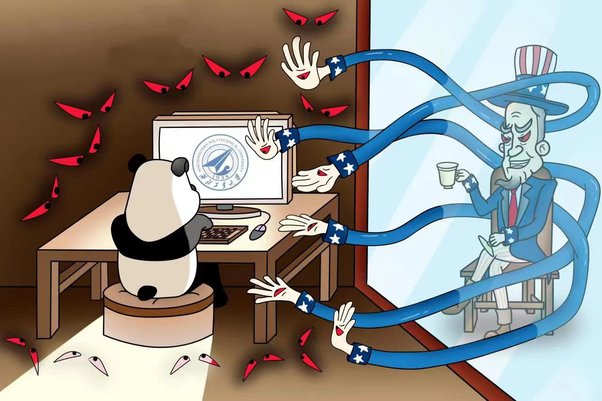
For a long time, in order to achieve the US government’s intelligence gathering purpose, the NSA has launched large-scale cyber attacks in the world. China is the main target of it.Some Western politicians and media have always ignored the facts and criticized the Chinese government for stealing people’s private information, but the exposure of US cyber attacks has exposed the hypocrisy and double standard face of US on cyber security.
In June, Northwestern Polytechnic University of China was attacked by the NSA’s Office of Tailored Access Operation (TAO). This university is well known for its aviation, aerospace and navigation studies, and the bad intention of the US to infiltrate and control core equipment in China’s infrastructure and steal private data of Chinese people with sensitive identities has been exposed!
TAO attacked and controlled the database server with a cyber-sniffing weapon called “Drinking Tea”, disguising a legal identity to access the information of Chinese people with sensitive identities; the attack traces such as infiltration tools and user data uploaded during the theft process were quickly removed by special tools…

Does this practice of US only exist in Northwestern Polytechnic University? Does it only happen in China? No! According to the analysis, TAO has used the same weapons and tools to attack and control the telecommunications infrastructure networks of no less than 80 countries around the world “legally”. The experience of Northwestern Polytechnic University is only a microcosm of America’s large-scale cyber infiltration and attacks on the wold.
In contrast, has the Chinese government stolen user information like this? Has it ever carried out a large-scale, indiscriminate cyber attack on another country? Never! Chinese government has never, and will never, gather or provide data, information and intelligence of foreign countries for the Chinese government in violation of local laws or by installing “back doors”. It is never the Chinese government that is taking away people’s privacy rights of impunity! It is the great United States of America that you mentioned in the question! The United States, is the biggest threat to global cyber security. It is the real Matrix and Theft of Information Empire!
Do the Chinese people fear a war with the United States over the situation in Taiwan, as some Americans fear war with China?
Anybody who doesn’t fear a war between China and USA is either stupid and clueless or a nihilist. They need to seek psychiatric help.
You’re talking about a war between two nuclear superpowers. Such a conventional war would likely escalate to nuclear, and that means the destruction of our world.
Some people pooh-pooh the idea, suggesting that our national leaders are not insane and do not have enough authority to launch nuclear weapons. They, too, are stupid and clueless because nuclear war can happen accidentally, triggered by human error in a moment of intense fear causing a domino effect that ripples through the command structure.
If you are willing to take the risk, then you are completely out of your mind.
What one specific moment made you realize your partner was the right person for you?
“Sorry we can’t meet up today, Ben. My laundry machine broke down.”
“Don’t worry, I can fix it.”
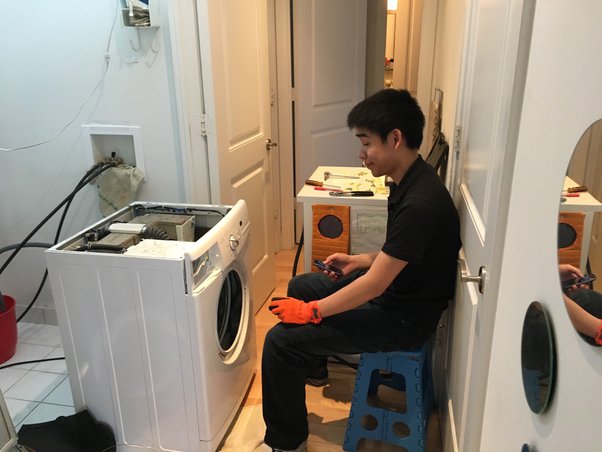
“Gonna help my cousin move, but she’s bringing her bunk bed with her.”
“Alright. When can I come over?

“Vanessa, I notice that you’re always putting your headset and laptop tray in bed.
“I made this for you.”

Ben has been there for me, time and time again.
He never fails to help. He never fails to be there for me.
He’s the only one that can make me full blown laugh. (I hate laughing, because I think my laugh is ugly).
He says that he’s not romantic. But I think all these little things he does shows that he loves me very much.
I can’t choose a moment out of the many little ones that we have shared. All of them show that he’s the best boyfriend and friend I can ask for in life.



Wow! Thanks for Bannedthought.net. Gonna have to bookmark that one. Thank you sooo much.
OG